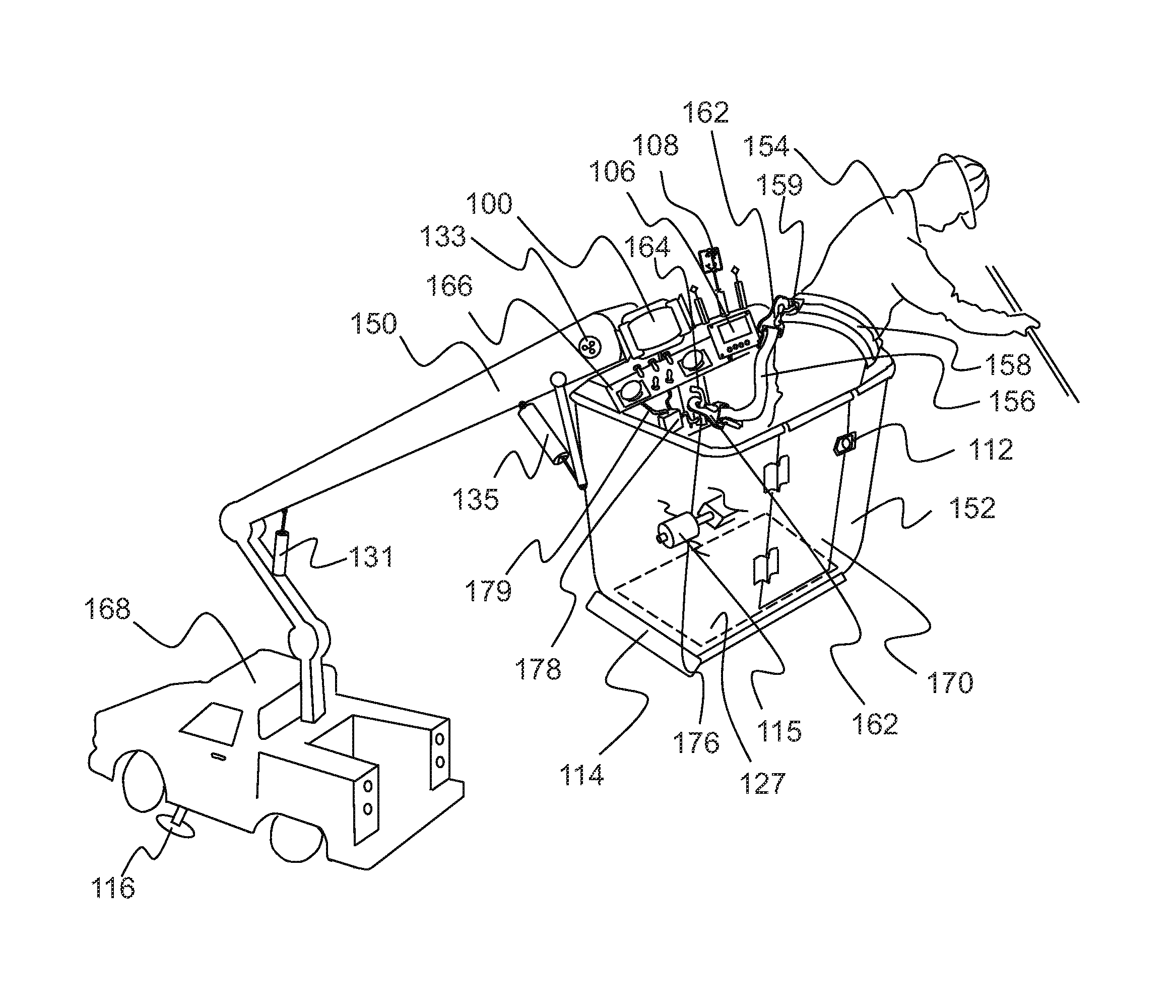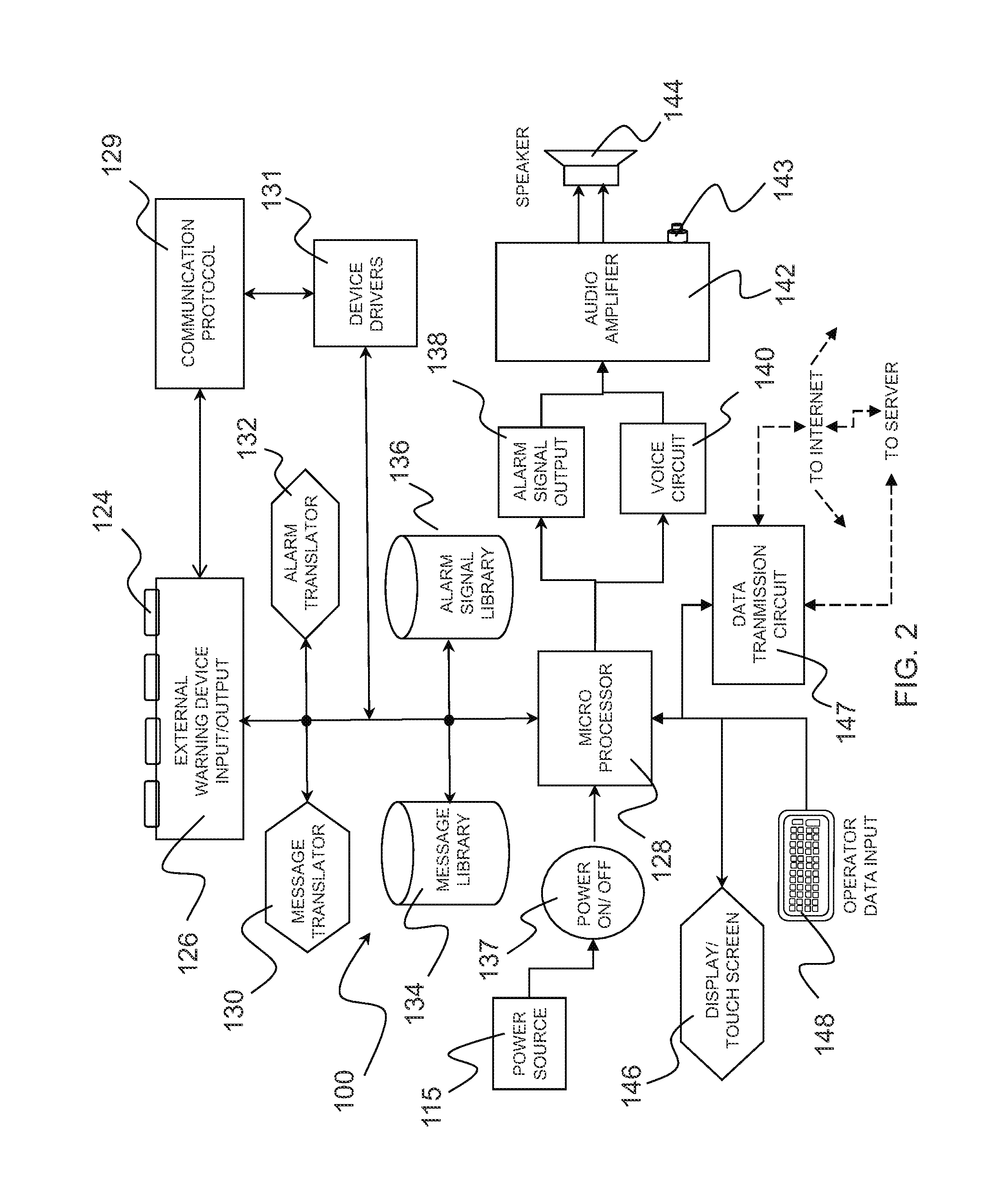Quite different from
HVAC equipment, construction and aerialift machinery apparatus presents a
significant risk and danger not only to the operators, but to those in proximity to the machinery.
An issue in this approach is that the
system may be defeated by leaving the safety lanyard attached to the
anchor point at all times. An operator may forget or otherwise fail to secure the lanyard to themselves, and can even leave the work platform and in such a situation leave the lanyard on the
anchor point allowing operation of the platform without a secure attachment of the lanyard to the body harness of the operator creating a safety
hazard.
The references apply strategies to detect a connection of the safety lanyard to the harness and then to the
anchor point, but these designs are not readily available to retrofit current lanyard product and therefore present cost prohibitive barriers to adoption of these methods even though benefits in
fall prevention may be achieved.
Importantly, this approach of issuing a verbal message only when a fault has occurred may induce the attachment of the
safety harness to the anchor point in order to operate the lift, but does not ensure that the lift operator also verifies attachment of the lanyard to their body harness.
The limited verbal message may induce action but fails to reinforce this important safety requirement with a fail-
safe system and mechanisms as well as through
operational monitoring and with a large number of operators working in remote areas or in areas where there is limited or no supervision, there is no disclosure in the references of a way to reinforce and monitor safety procedures, to track safety violations or to subject violators to penalties, fines and other negative ramifications by Supervisory and / or Safety officials at their workplace or by U.S.
Occupational Safety and Health Administration (OSHA) and other regulatory agencies charged with
enforcement of work platform
fall protection safety infractions.
This inability to supervise, track and verify adherence to safety protocols may permit operators to bypass and circumvent safety apparatus without acknowledging or understanding that the apparatus has been put into place to prevent accidents that may result in
loss of life,
With the widespread use of
aerial lift systems, and the critical need for improved methods of training, the references fail to disclose a system which provides audible and / or visual warnings and reinforces safety procedures and training.
The references also fail to disclose the monitoring, tracking and analysis of
multiple fault conditions.
The references also do not disclose a monitoring unit capable of monitoring numerous warning devices and sensors cooperatively to provide continual status checks of
safety equipment and deliver as necessary appropriate audible and / or visual warnings based on alerts received from this
safety equipment.
These scenarios are fraught with situations in which the operator may leave the aerialift basket or platform area to retrieve tools or the like, return to the aerialift work platform, and forget to attach the safety lanyard to the anchor point on the boom or work platform or to his / her body harness.
The operator may also fail to identify the proximity of
high voltage lines as the work platform is angled and shifted to more easily access the wires and equipment being serviced.
The various accident situations which can occur are quite dangerous and can include the operator subsequently falling from an aerialift work platform or being electrocuted from power lines.
These accidents tend to be quite severe, resulting in broken bones, head and back injuries, as well as documented cases of permanent
paralysis and death.
While these standards generally require the use of
fall protection and warning systems and methods in conjunction with the use and operation of aerialift booms and the like, they do not dictate any positive system of
enforcement regarding the use of these
fall protection and warning systems nor do any systems exist to properly capture and track infractions by operators failing to secure a safety belt or properly use and react to other
safety equipment.
This approach is obviously only effective in situations where the worker is operating in a group context and would be ineffective for service workers that work alone such as
telecommunications technicians, electrical workers, arborists, warehouse workers, painters, light and
signal maintenance workers, window washers, or maintenance construction workers for example.
The use of written fall protection plans and fall protection training are similarly ineffective in this context.
Within the context of aerialift work platforms and the like (where the potential for serious injury resulting from an
accidental fall is the greatest), the policies and procedures of OSHA seem to have the least potential for affecting an acceptable solution to this serious safety problem.
Thus, the existing methodologies do not address the human factor involved in the operation of elevating machinery which can
pose potentially deadly falls and other hazards to their operators.
In fact, government regulations and safety training are insufficient to ensure that safety devices are properly used or in fact used at all.
Unfortunately, with the
rapid expansion of the construction,
telecommunications, and cable TV industries, the use of aerialift work platform devices has skyrocketed, resulting in a marked increase in accidental falls and subsequent severe injuries to workers in these fields.
It is obvious from the
record that fall protection training as well as policies and procedures for fall protection are inadequate to solve this problem alone.
While the use of lanyards and other
fall prevention devices is widespread within the
construction industry, there appears to be no art relevant to systems and methods that permit the use of these devices to be mandated or monitored to ensure their proper use.
As a result, accidental falls continue to injure and disable thousands of workers per year.
 Login to View More
Login to View More  Login to View More
Login to View More 


